Can someone help me to understand what we expected in the output(Voutn,Voutp) of the circuit of figure 1?I have searched for months a lot of books but I can't understand the operation of the rail to rail stage.Why someone to use it? The rail to rail stage will amplify furthermore the signal vin1(which is the amplified signal of amp)?
The figure 1 presents an amplifier with a gain approximately 50, and the output of amplifier connects to the first input of rail to rail circuit.The second input of the rail to rail circuit is a triangular waveform with a frequency that we set it up.
Also, I have found that we use rail to rail stage because we don't know the DC level of vin1 signal so if we had used only for example nmos transistor and the DC level of vin1 was 0.2V (with VDD 1.8V) maybe the nmos transistor was off so the signal couldn't analyzed further.Is this true?
The link for rail to rail stage:
http://ocean.kisti.re.kr/downfile/volume/ieek/E1STIF/2015/v4n4/E1STIF_2015_v4n4_291.pdf
I would like to notice that the circuit in figure 1 it isn't in the same logic of paper but only uses the rail to rail stage and the other stages from the paper.To make it clear the difference is that the figure 1 has different inputs for rail to rail stage compared the inputs of the paper link.
